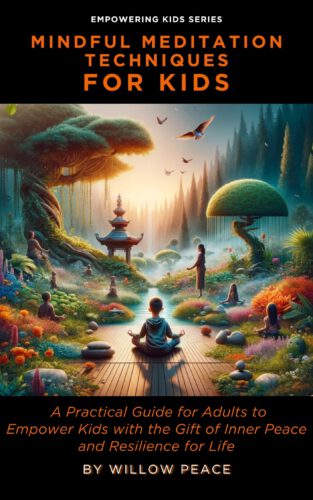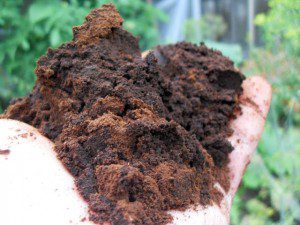Guest Writer for Wake Up World
Coffee is one of the most consumed beverages in the world. It’s grown in over 70 countries and amounts to over 16 billion pounds of beans every year. That’s a lot of beans… and when they’re only used once and thrown away, it also amounts to a huge amount of waste.
If you drink a lot of coffee or have worked in a coffee house, you have probably looked at the massive amount of coffee grounds being thrown away after one use and wondered, “isn’t there something these can be used for?” You’re not alone, researchers all over the world have wondered the same thing and explored the issue. The good news — spent coffee grounds DO have value! What potential uses for used coffee grounds have been found?
1. Remove Lead from Water
Researchers at Japan’s Kinki University investigated the possibility of using coffee grounds to remove lead from drinking water and found that, indeed, not only was it possible, but that it actually worked quite well. [1] The prospect of using coffee grounds, an overly abundant waste item, for a purpose as beneficial as removing lead from drinking water is an exciting idea!
2. Biodiesel Production
You may have heard of diesel vehicles being converted to run on discarded grease from fast food restaurants, wouldn’t it be great if discarded coffee grounds could also be used as a source of energy? Perhaps they can.
Researchers at the University of Nevada in Reno found that oil extracted from spent coffee grounds could be converted to biodiesel. Spent coffee grounds can contain about 15% oil, depending on the variety. This might not sound like much, but experts estimated that the biodiesel production levels could reach upwards of 340 million gallons when accounting for all the used coffee grounds in the world. As a side bonus, they also determined that even after the oil is extracted, the coffee grounds are still great for garden fertilizer, feedstock for ethanol, and fuel pellets.[2]
Additionally, the Research Institute of Industrial Science and Technology in South Korea conducted similar experiments and found that spent coffee grounds were a strong candidate for the production of bioethanol and biodiesel. [3]
3. Enhances Composting
A 2008 study out of Malaysia found that when coffee grounds were added to vermicompost — composting that uses worms — it helped produce more earthworms than kitchen waste alone. This is, at least partially, because the coffee grounds increased the nutrient content in the vermicompost. [4] This is an easy one for anyone to partake in. If you’re not composting, start composting. And if you are already, make sure to throw your coffee grounds in the mix!
4. Agricultural Nutrient
It’s fairly common for home gardeners to add used coffee grounds to garden soil. I had a friend who would routinely dump the remnants of his French press right into his plant pots. Old wives tale? Not quite, research suggests it’s an idea with merit.
In early 2012, Portuguese researchers examined the impact of adding spent coffee grounds to growing lettuce. The results were astounding — the carotenoid and chlorophyll content in the lettuce increased, as did the amount of lutein and beta-carotene. There is a ceiling, however, as they also determined that a 10% limit on the ratio of coffee grounds to soil was where the benefits stopped. [5]
In Japan, the National Institute of Vegetable and Tea Science has published information recommending that spent coffee grounds be added to rice farming so as to increase rice yields and the nutrient content (as well as decrease landfill waste). [6]
5. Source of Antioxidants and Other Nutrients
So really, why are spent coffee grounds so beneficial? Because they’re not actually “spent” and they still contain valuable nutrients. Just earlier this year, it was confirmed that spent coffee grounds still contained antioxidants that could be used for nutritional supplements, food or cosmetics. [7]
In fact, research conducted at Spain’s University of Navarra found that spent coffee grounds actually contained up to seven times the amount of beneficial antioxidants than the respective brewed coffee! [8]
The Logistics of Using Spent Coffee Grounds
While most anyone can take advantage of using spent coffee grounds at home to fertilize their plants or add to their compost pile, some of the other uses, like biodiesel creation, are less home-user friendly, and require significant processes to be in place. It begs the question — do large scale coffee outfits like Starbucks have a plan in place to repurpose the spent grounds? Are there any industries springing up to collect and process used grounds? I couldn’t find an answer to that in my research. If you know, please weigh in and leave a comment below. Additionally, if you have a used for spent coffee grounds, please share that with us too!
-Dr. Edward F. Group III, DC, ND, DACBN, DABFM
Article References:
- Tokimoto T, Kawasaki N, Nakamura T, Akutagawa J, Tanada S. Removal of lead ions in drinking water by coffee grounds as vegetable biomass. J Colloid Interface Sci. 2005 Jan 1;281(1):56-61.
- Kondamudi N, Mohapatra SK, Misra M. Spent coffee grounds as a versatile source of green energy. J Agric Food Chem. 2008 Dec 24;56(24):11757-60. doi: 10.1021/jf802487s.
- Kwon EE, Yi H, Jeon YJ. Sequential co-production of biodiesel and bioethanol with spent coffee grounds. Bioresour Technol. 2013 May;136:475-80. doi: 10.1016/j.biortech.2013.03.052. Epub 2013 Mar 16.
- Adi AJ, Noor ZM. Waste recycling: utilization of coffee grounds and kitchen waste in vermicomposting. Bioresour Technol. 2009 Jan;100(2):1027-30. doi: 10.1016/j.biortech.2008.07.024. Epub 2008 Aug 26.
- Cruz R, Baptista P, Cunha S, Pereira JA, Casal S. Carotenoids of lettuce (Lactuca sativa L.) grown on soil enriched with spent coffee grounds. Molecules. 2012 Feb 7;17(2):1535-47. doi: 10.3390/molecules17021535.
- Morikawa CK, Saigusa M. Recycling coffee grounds and tea leaf wastes to improve the yield and mineral content of grains of paddy rice. J Sci Food Agric. 2011 Aug 30;91(11):2108-11. doi: 10.1002/jsfa.4444. Epub 2011 May 5.
- Panusa A, Zuorro A, Lavecchia R, Marrosu G, Petrucci R. Recovery of Natural Antioxidants from Spent Coffee Grounds. J Agric Food Chem. 2013 Apr 11.
- Bravo J, Juà¡niz I, Monente C, Caemmerer B, Kroh LW, De Peà±a MP, Cid C. Evaluation of spent coffee obtained from the most common coffeemakers as a source of hydrophilic bioactive compounds. J Agric Food Chem. 2012 Dec 26;60(51):12565-73. doi: 10.1021/jf3040594. Epub 2012 Dec 13.
Previous articles by Dr Edward
- 15 Must-Know Facts About Iodine
- The Benefits of Himalayan Salt
- Lung Cleansing With Peppermint Oil
- How to Flush the Liver
- Tribulus Terrestris: Herbal Aphrodisiac?
- Top 10 ProBiotic Foods to Add to Your Diet
- 10 Foods That Detox the Body
- The Benefits of Organic Hemp Milk + How to Make Your Own
- Natural Remedies For Bad Breath
About the Author
Dr. Edward F. Group founded Global Healing Center in 1998 and is currently the Chief Executive Officer. Heading up the research and development team, Dr. Group assumes a hands-on approach in producing new and advanced degenerative disease products and information.
Dr. Group has studied natural healing methods for over 20 years and now teaches individuals and practitioners all around the world. He no longer sees patients but solely concentrates on spreading the word of health and wellness to the global community. Under his leadership, Global Healing Center, Inc. has earned recognition as one of the largest alternative, natural and organic health resources on the Internet.

If you've ever found value in our articles, we'd greatly appreciate your support by purchasing Mindful Meditation Techniques for Kids - A Practical Guide for Adults to Empower Kids with the Gift of Inner Peace and Resilience for Life.
In the spirit of mindfulness, we encourage you to choose the paperback version. Delve into its pages away from screen glare and notifications, allowing yourself to fully immerse in the transformative practices within. The physical book enriches the learning process and serves as a tangible commitment to mindfulness, easily shared among family and friends.
Over the past few years, Wake Up World has faced significant online censorship, impacting our financial ability to stay online. Instead of soliciting donations, we're exploring win-win solutions with our readers to remain financially viable. Moving into book publishing, we hope to secure ongoing funds to continue our mission. With over 8,500 articles published in the past 13 years, we are committed to keeping our content free and accessible to everyone, without resorting to a paywall.







